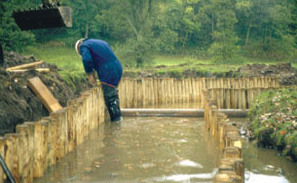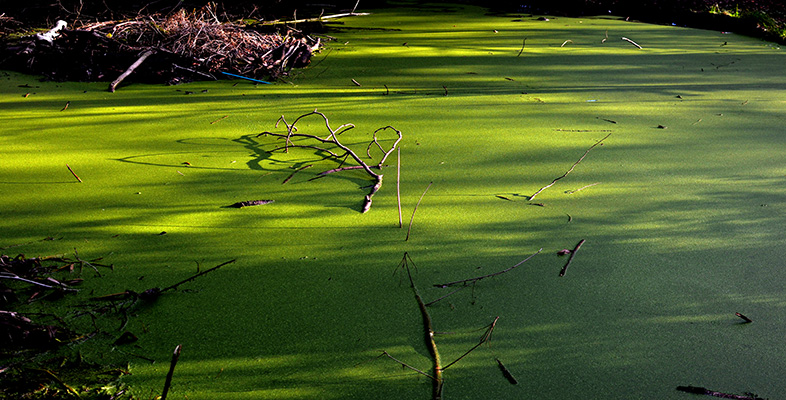2.1.1 Loss of submerged plant communities
One of the symptoms of extreme eutrophication in shallow waters is often a substantial or complete loss of submerged plant communities and their replacement by dense phytoplankton communities (algal blooms). This results not only in the loss of characteristic plant species (macrophytes) but also in reduced habitat structure within the water body. Submerged plants provide refuges for invertebrate species against predation by fish. Some of these invertebrate species are phytoplankton-grazers and play an important part in balancing relative proportions of macrophytes and phytoplankton. Submerged macrophytes also stabilize sediments and the banks of slow-flowing rivers or lakes. Bodies of water used for recreation (boating for example) become more vulnerable to bank destabilization and erosion in the absence of well-developed plant communities, making artificial bank stabilization necessary (Figure 2.4). Submerged plants also have a role in the oxygenation of lower water layers and in the maintenance of aquatic pH.

SAQ 9
Name three species of submerged macrophytes that are tolerant of eutrophic water.
Answer
Spiked water-milfoil (Myriophyllum spicatum), fennel-leaved pondweed (Potamogeton pectinatus) and arrowhead (Sagittaria sagittifolia).
